iFi Audio, renowned for their ZEN DAC series of DAC/amp combos, are a British audio technology brand with a rather wide range of DACs, headphone amplifiers, power supplies, cables, adapters, streamers, phono pre-amplifiers and cases for those who rely on their smart phones for their daily injection of music. The lineup is both budget-friendly and aligned with those who may want to spend slightly more to get the most out of their headphone and IEM collections.
Many admirers of their products praise their impressive build quality and smooth, effortless sound among other things. The latter can be mainly attributed to the use of the uncommon Burr-Brown DAC chip.
iFi recently released the GO link Max, sitting right at the bottom of their price range at just $79. It also uses a cheaper ESS DAC chip; what will this mean for the sound quality and how well does the little dongle power a range of different headphones?

Specifications & Technology
iFi claim that the Go link Max is the “ultimate portable solution” for both new and experienced audiophiles “seeking simplicity and performance on the go.” With 241mW of output power at 32 Ohms and fully balanced circuitry, the product certainly ticks several boxes off the bat for such an inexpensive solution.
The twin ESS Sabre DAC chips (ES9219) not only have impressive signal-to-noise and harmonic distortion figures (130dBA and <0.0016% @32 Ohms through the 4.4mm jack), they also feature Dynamic Range Enhancement (DRE) technology, boosting dynamic range by 6dB to 130dB.
Having that 4.4mm balanced out is great option considering that many headphone companies are switching to providing 4.4mm cables out of the box. There is also a 3.5mm jack for convenience, though do bear in mind that it doesn’t provide the same level of power and performance as the 4.4mm (100mW at 32 Ohms) output.

Design & Build
Moving onto build, it sports a primarily metal construction which is well-finished with no sharp edges. You simply won’t get a better designed Dongle DAC at under 100 bucks. And the fact that its so small (150 x 15 x 10mm or 5.9 x 0.59 x 0.39”) means it is truly portable.
My only gripe is with the non-detachable cable connecting the DAC/amp to the USB-C connector. While it looks premium, if you were to break it you would need to buy a whole new GO link Max.
A single light indicates which audio format and bit rate is playing out of the device by changing colour; the GO link Max can decode up to DSD256 and 32-bit/384kHz PCM which is more than anyone would ever need.
Other than that, the product is as bare-bones as it gets, which can be considered a good thing since many customers could be first-time audiophiles or music lovers looking to upgrade their listening experience.
The Go link Max connects to a playback device via USB-C as previously mentioned, but USB-A and lightning adapters are provided for those wanting to connect to desktops and iPhones respectively.

Performance & Synergy
I used the iFi GO link Max in combination with a variety of over-ear headphones, including the HiFiMAN HE1000 Unveiled, Beyerdynamic DT880 Edition 600 Ohm, Sony MDR-1A and Audio Technica R70x among several others. All except the Beyerdynamic were plugged in via the 4.4mm jack to extract the maximum output from the GO link Max.
The majority of my listening was done by plugging the GO link Max into my laptop, through which a mixture of hi-res FLAC files and Spotify music were analysed.
In their marketing, iFi have frequently alluded to the fact that the GO link Max is five times more powerful than a MacBook’s headphone output, and ten times more than that of an iPhone dongle.
This is true, and you do indeed get a lot more volume out of the little iFi dongle than you do through the headphone jack on any mobile phone, laptop or desktop. But it’s in the resolution and clarity, those tangible qualities that help bring music to life, that the iFi GO link Max really impresses.
It’s almost difficult to pinpoint exactly how the GO link Max elevates sound quality when compared to a laptop or smartphone jack because the improvements are present in pretty much every facet of sonic playback.
Bass texture did stick out to me though, which is particularly surprising considering I found the GO link Max to be slightly lean in its overall sonic signature. On the other side of the frequency spectrum, treble notes had drastically improved attack and presence, making music simply sound more detailed.
All of this was none the more evident than in L’Impératrice’s “La lune,” where previously imperceptible triangle notes that play in the background were reproduced with remarkable clarity. At the same time, the bass guitar’s body and texture were greatly elevated in comparison to the same section listened through an iPhone dongle.
“Chocolate Chip Trip” by TOOL beautifully demonstrated the iFi GO link Max’s imaging and soundstaging capabilities. Safe to say there are a lot of overlapping sounds in that track, but the GO link Max manages to keep them well separated and placed in the soundscape whereas the regular headphone jack on my laptop falls flat in this regard.
There’s really no faulting the sound of this little dongle, especially in the sub-$100 price category. Of course, it’s not going to match the sound quality of a fully-fledged desktop setup costing in the thousands, but it gets the job done as long as you match up your headphones or IEMs properly.
The only time I was less than absolutely floored by the performance of the GO link Max was when I used it with the Beyerdynamic DT880 Edition 600 Ohm headphones. The treble-leaning signature of the dongle in combination with the very sharp-sounding headphones was simply too much on some tracks. But this was a fringe case, and I was also only able to use the less powerful 3.5mm jack as the DT880 has a non-detachable single-ended cable.
Speaking of power, I found 241mW to be more than enough to power even relatively difficult-to-drive headphones like the R70x and Arya Organic with plenty of volume left in the tank unless you listen at unsafe levels.

The Bottom Line
One of the best aspects of the Head-Fi revolution has been the impressive growth of companies like iFi Audio, FiiO, Questyle, and Astell&Kern that have made high-end portable audio attainable. Although not every product is priced at $79 like the iFi GO link Max — there are more than enough options priced below $450 that you don’t have to spend a fortune on a Dongle DAC/Amplifier to achieve the results that you want.
In a category where headphones and IEMs have become a commodity, it’s good to know that one can purchase genuine quality like this well-made Dongle DAC and hold onto it for the long-term and know that you got a true bargain.
Pros:
- Solidly built with a pleasant design
- Simple to use, plug in and play
- Unmatched sound quality for the price
Cons:
- Non-detachable cable is a structural weakpoint
- Power output from 3.5mm jack is not ideal with high impedance dynamic headphones
Where to buy:
Related Reading:


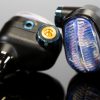

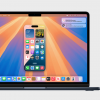


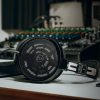



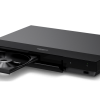

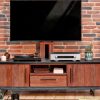




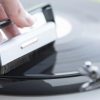

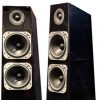


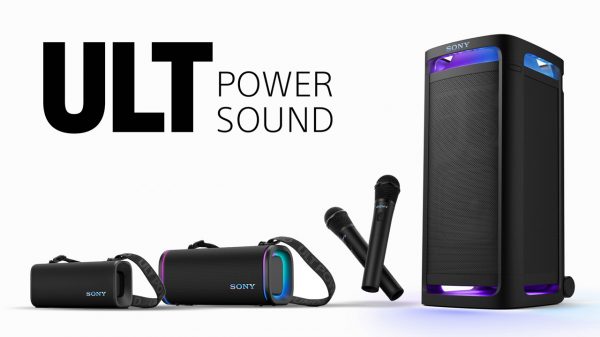
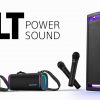















Businesseyl
February 18, 2025 at 9:44 pm
mostly in monasteries.